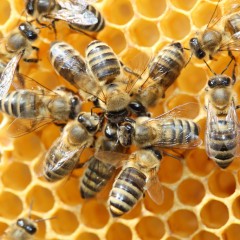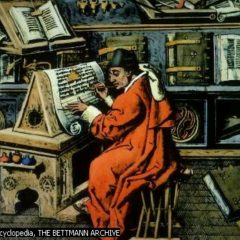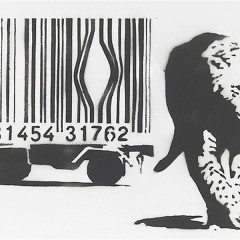How Do Quartz Watches Work ?
Quartz watches – we all know of them, use them , rely on them – but have you ever stopped to wonder how they work ? How a mineral like quartz can possibly be used to keep acurate time? Well wonder no more, in this article we hope to lay bare some the secrets and mysteries of the little marvel on your wrist, the quartz watch.
The Joy of Slinky – The Physics of a Metal Marvel
I’ve recently re-discovered the joy of the Slinky – one of the simplest of all children’s toys and yet, so beguiling, as it seems to defy the laws of physics by hinting at some sort of perpetual motion. So how on earth does this work?
Reading Ancient ‘Unreadable’ Texts Lost for Centuries
Any Bibliophile will appreciate, or at least empathise (if you’ve never had the opportunity), the exquisite pleasure of gazing upon an ancient book or scroll and reading the words engraved on its pages hundreds or thousands of years ago.
How Happy is Your Dog ?
When it comes to the pointless application of technology then this must rank pretty high … Introducing the Wagometer
How Do Bees Communicate ? – And How we can use this for Internet Webservers
Examining how Bees work and interact reveals a highly organised and efficient ‘machine’. They appear to co-operate, communicate and work together as a unit with one purpose. But given that Bees don’t seem to communicate verbally, how do they do it?
Are We in a Digital Information Dark Age Right Now ?
We are living in an age when the amount of data being collected every minute from the daily lives of those on the planet has never been greater. Information is literally is at our fingertips. So how could we be in a ‘Digital Information Dark Age’ ?
Now that’s a Great Idea – Dirt Repelling Clothes
This is something to get washing machine and soap manuafactures in a lather – clothes that clean themselves, or at least resist the grubby attention of the World’s grime.
The Humble Vacuum Cleaner – Who Invented it ?
The vacuum cleaner is perhaps the only invention whose history begins with a handkerchief stuffed in a man’s mouth. The mouth belonged to British engineer Hubert Booth.
Dynamite
Nothing seems quite so paradoxical as the inventor of dynamite being the sponsor of the World’s most renowned peace award – The Nobel Prize. That being the case the invention of Dynamite, please note NOT gunpowder, was a pretty seminal moment in the history of technology.
Who Invented the Vending Machine ?
The Vending Machine is a lot older than you might think. It was actually invented by Greek inventor ‘Hero of Alexandria’ who came up with the first known vending machine design around AD 60.
Technology Firsts : The First Telegraphic Message Across the Atlantic
On August 16, 1858, the first ever message was sent across the Atlantic by telegraph cable it read : “Glory to God in the highest; on earth, peace and good will toward men”. The transmission marked the culmination of 19 years of dreams, plans setbacks and hard work.
The First Cities
Thursday July 12 2007 was a seminal day (apparently). On that day the a United Nations report, that coincided with World Population Day, revealed that for the first time in history, more people were now living in cities than rural areas. But how did this come about ? In this artice we look at the key argricultural and technological developements needed for this to happen.
How do Barcodes Work ?
Barcodes are an example of one of those modern ubiquitous technologies that we take for granted. They ‘just work’ – but HOW ?
Great British Inventions
The British have always been an innovative and inventive nation. Just how inventive may surprise you. In this article we look at just four of the inventions that Britons have made without which, life today would be very different indeed :
To Surf and Serve
Have you ever had a hankering to be involved with some of today’s latest cutting edge scientific projects. Maybe rub shoulder with the teams searching for extraterrestrial intelligence, or join the hunt for very large prime numbers or test algorithms for predicting the three-dimensional shape of protein molecules from their linear formula?



















